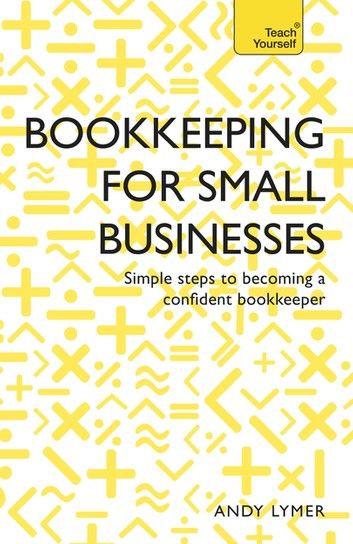| FindBook |
有 1 項符合
Bookkeeping for Small Businesses的圖書 |
 |
Bookkeeping for Small Businesses 作者:Andy Lymer,Nick Rowbottom 出版社:John Murray Press 出版日期:2015-08-27 語言:英文 |
| 圖書館借閱 |
| 國家圖書館 | 全國圖書書目資訊網 | 國立公共資訊圖書館 | 電子書服務平台 | MetaCat 跨館整合查詢 |
| 臺北市立圖書館 | 新北市立圖書館 | 基隆市公共圖書館 | 桃園市立圖書館 | 新竹縣公共圖書館 |
| 苗栗縣立圖書館 | 臺中市立圖書館 | 彰化縣公共圖書館 | 南投縣文化局 | 雲林縣公共圖書館 |
| 嘉義縣圖書館 | 臺南市立圖書館 | 高雄市立圖書館 | 屏東縣公共圖書館 | 宜蘭縣公共圖書館 |
| 花蓮縣文化局 | 臺東縣文化處 |
|
|
Is this the right book for me?
Book keeping is neither dull nor mysterious - its rules are logical and straightforward and are readily mastered by practice. Successful Bookkeeping for Small Business is a substantial yet easy to follow introduction to the principles of bookkeeping and the practical skills of recording transactions, posting the ledgers and preparing final accounts.
Written by finance and accounting experts from the University of Birmingham this book:
- Explains the purpose and use of books of original entry as the basis of the double-entry system.
- Describes the processes of recording purchases, sales and cash transactions.
- Shows how these records are used to prepare the final accounts, the manufacturing, trading and profit and loss accounts and the balance sheet to provide accurate financial statements.
- Explores petty cash, depreciation, partnership, company law, business documents and the effect of changes in IT.
Worked examples throughout allow you to put the theory into practice. There is also a wide range of carefully graded questions and exercises with sample answers. In short, it demystifies the art of bookkeeping and gives you the confidence you need to tackle your books.
Successful Bookkeeping for Small Business includes:
Chapter 1: What is book keeping?
Chapter 2: Business documents
Chapter 3: The business transaction, purchases and sales
Chapter 4: Purchase and sales transactions and ledger accounts
Chapter 5: Cash transactions
Chapter 6: The bank reconciliation
Chapter 7: Petty cash
Chapter 8: The (general) journal
Chapter 9: Writing up the books
Chapter 10: The trial balance
Chapter 11: What is profit or loss?
Chapter 12: The revenue account: the trading, profit and loss and appropriation accounts
Chapter 13: The balance sheet
Chapter 14: Adjustments in the final accounts
Chapter 15: Depreciation
Chapter 16: Clubs, societies and charities book keeping
Chapter 17: Information technology and book keeping
Chapter 18: Partnerships
Chapter 19: Limited companies
Chapter 20: The analysis and interpretations of accounts
Learn effortlessly with a new easy-to-read page design and added features:
Not got much time?
One, five and ten-minute introductions to key principles to get you started.
Author insights
Lots of instant help with common problems and quick tips for success, based on the authors' many years of experience.
Test yourself
Tests in the book and online to keep track of your progress.
Extend your knowledge
Extra online articles to give you a richer understanding of bookkeeping.
Try this
Innovative exercises illustrate what you've learnt and how to use it.
|











